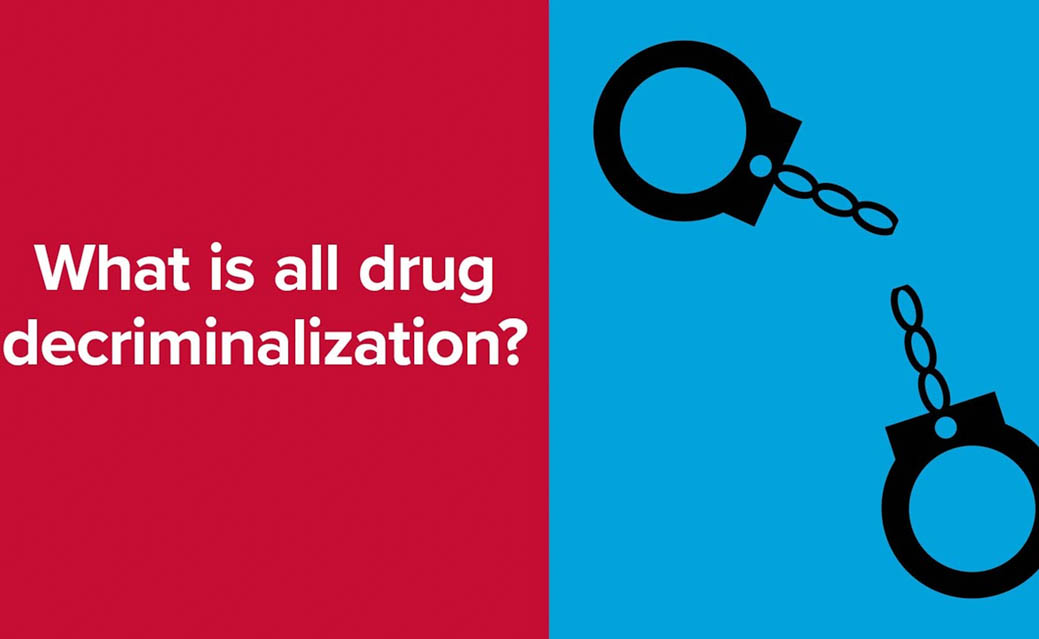Decriminalizing and regulating drugs may reduce overdose rates
The current drug toxicity crisis is a public health concern that needs to be addressed.
The war on drugs has been a failure, according to Dr. Akwasi Owusu-Bempah, a sociology assistant professor at the University of Toronto Mississauga who was recently featured in the news for his insights on drug use in the city of Toronto. “I’m more in favour of legalizing and regulating than I am decriminalizing drugs,” he says. “This concept would be similar to what we have with cannabis now, where adults would [have] access to what are now illegal substances.”
The legalization and regulation of drugs would entail control over the production and selling of drugs across the country. Depending on the type of drug, and the possible severity of prolonged use, different drugs would be accessible through different means. “Something like heroin would require a doctor’s prescription,” explains Dr. Owusu-Bempah. “Something less harmful like magic mushrooms would be accessible through a store or pharmacy.”
On the other hand, decriminalization would remove the penalty for simple drug possession. Although better than prohibition, where individuals get possession charges for small amounts of drugs, decriminalization would still leave space for illegal drug production and the potential for a continued toxicity crisis.
Criminalization of drugs has proved disadvantageous, with a drug and toxicity epidemic spreading across the country. “People are going to use drugs whether or not they are illegal,” adds Dr. Owuzu-Bempah. “Giving people sentences for those possessions is not productive. In reality, it is counterproductive because we know that the last thing that people with substance use problems want is criminalization and penalization from the state.”
According to him, the benefits of legalization would regulate the supply of substances that is causing the toxicity crisis. Opioid toxicity deaths in Canada have risen by 66 per cent since June of 2019. Illegally manufactured drugs containing fentanyl are often the cause. Fentanyl, a synthetic opioid used as both a pain medication and a recreational drug, is also used to mix into other opioids like heroin or cocaine. This drug is more efficiently produced, has a higher potency rate, and is less costly than other opioids. Illegal drug producers use fentanyl to increase profit on their sales.
“The government’s provision of these substances would also help diminish illegal markets,” continues Dr. Owusu-Bempah. Opioids are a harmful type of drug because they are undetectable to the human eye when mixed with other substances—leading to faster overdoses. This has led drug safety groups to teach the dangers of fentanyl as well as provide naloxone training to victims. Naloxone is a drug typically administered through a nasal spray or injection to combat the effects of fentanyl and potentially save users from lethal overdoses.
In October 2018, the Government of Canada announced the legalization of cannabis to “keep cannabis out of the hands of youth, keep profits out of the pockets of criminals, and protect public health and safety by allowing adult access to legal cannabis.” The Cannabis Act introduced strict regulations to the selling and purchasing of marijuana and opened regulated dispensaries across the country—similar to LCBOs. A year following the announcement, cannabis edibles and concentrates were made available to Canadians over 18 through regulated dispensaries.
Several programs established by the City of Toronto to subside the number of overdoses across the city have helped control the rise in the toxicity and drug epidemic. Some of which include drug checking services and safe consumption sites. Drug checking services have emerged as a direct result of the rise in fentanyl overdoses and the consumption of uncontrolled drugs. Multiple locations across the city allow drug users to bring in substances and paraphernalia (such as pipes, bongs, and needles) to check the toxicity of each drug using mass spectrometry technologies. In addition, these sites offer referrals to harm reduction support groups and other services including naloxone training.
Similar to drug checking services, safe consumption sites allow individuals who suffer from drug addictions to have a safe space to consume drugs in the presence of trained staff. The use of these sites was controversial when first announced to the public, with beliefs that they would only encourage people to purchase and consume more illegal substances. However, the supervised consumption sites have proven that a clean space for people to use their drugs helps the prevention of accidental overdoses. They also decrease the spread of diseases associated with drug use like HIV.
“My overall assessment of the legalization of cannabis is that it has been largely successful in achieving its main aims,” concludes Dr. Owusu-Bempah. “The policy is still rather new, and we have a long way to go to see real outcomes. But [this policy] has reaffirmed the need to move beyond cannabis and look at the legalization and regulation of other types of drugs.”
Associate Features Editor (Volume 48 & 49) — A recent graduate from UTM, Dalainey is currently working on completing her post-graduate studies in Professional Writing in Ottawa. She previously served as Staff Writer for The Medium‘s 47th Volume and as Associate Features Editor for Volume 48. Through her passion for languages, Dal hopes to create a fun and inviting atmosphere for readers through her contributions to the paper. When she isn’t working, Dal focuses on developing digital art and writing her first novel. You can connect with Dal on her Instagram or LinkedIn.


